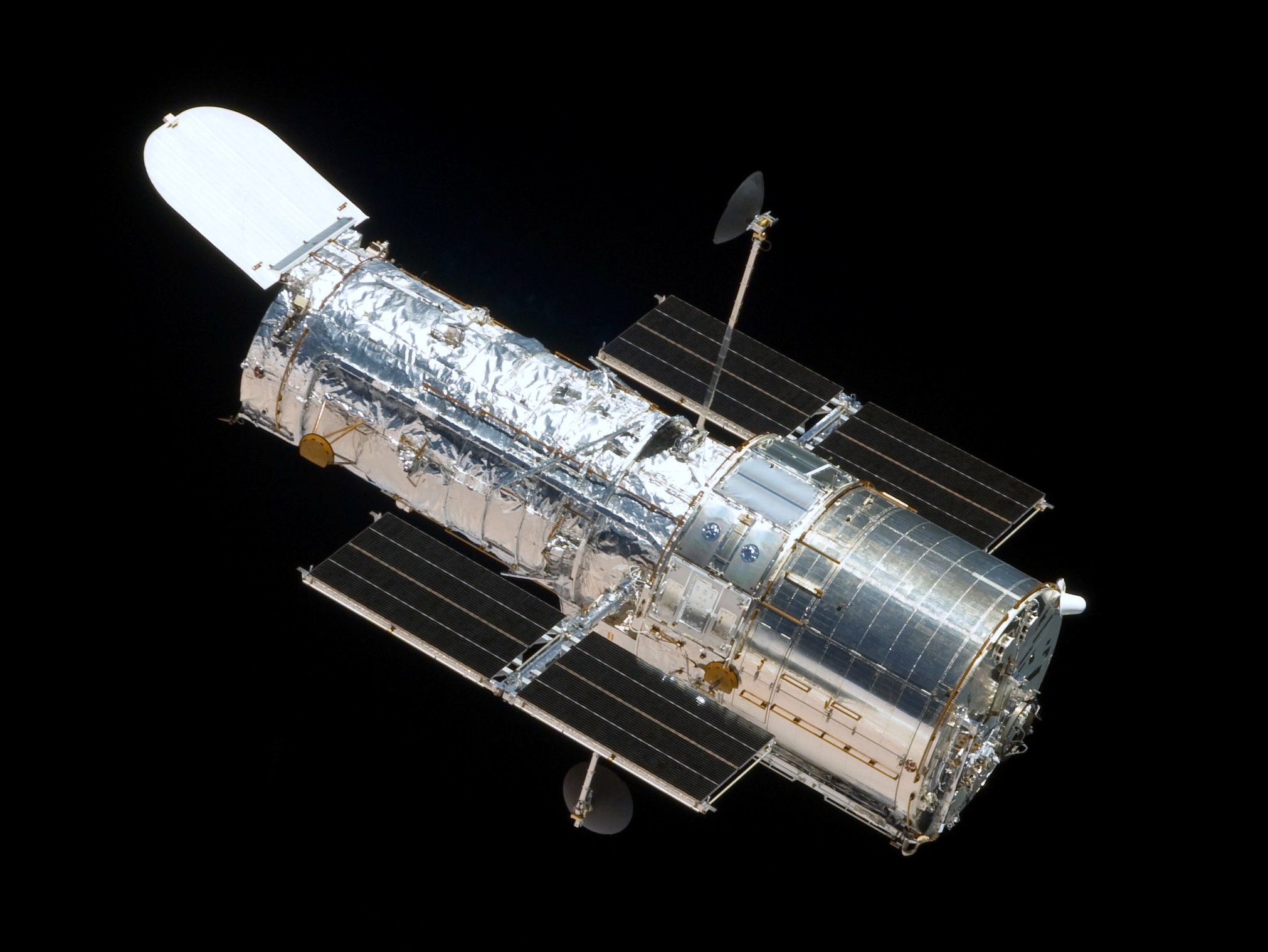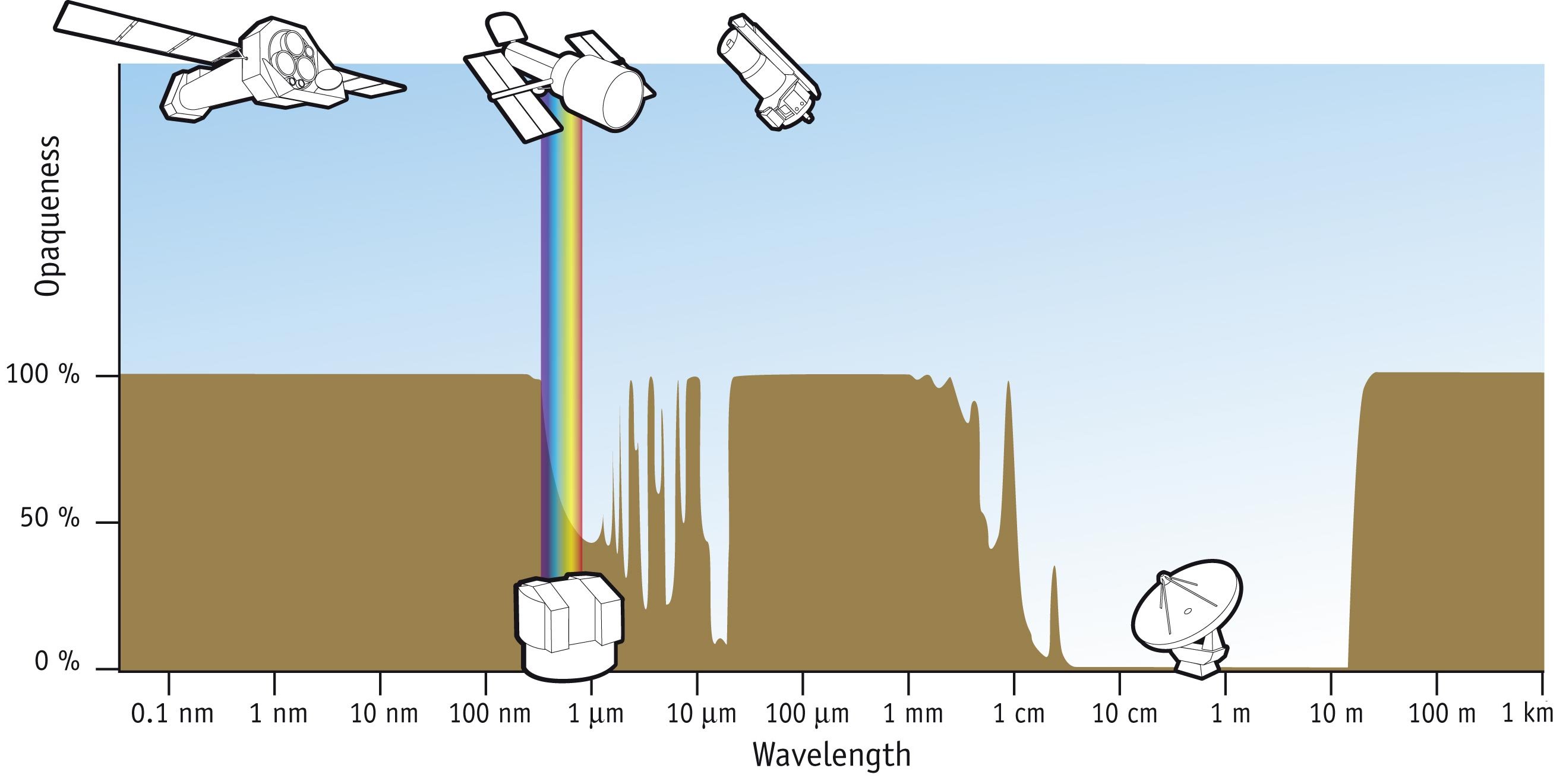|
Astron (spacecraft)
Astron was a Soviet space telescope launched on 23 March 1983 at 12:45:06 UTC, using the Proton launcher. Based on the 4MV spacecraft design and operational for six years, Astron was the largest ultraviolet space telescope of its time. The project was headed by Alexandr Boyarchuk. The spacecraft was designed and constructed by the Crimean Astrophysical Observatory and NPO Lavochkin. A group of scientists from these institutions was awarded the USSR State Prize for their work. The payload consisted of an 80 cm ultraviolet telescope, which was jointly designed by the USSR and France, and an X-ray spectroscope. It could take UV spectra 150-350 nm. Placed into an orbit with an apogee of , Astron was capable of making observations outside the Earth's umbra and radiation belt. Among the most important observations made by Astron were those of SN 1987A supernova from March 4 to March 12, 1987, and of Halley's Comet in December 1985, the latter of which enabled a grou ... [...More Info...] [...Related Items...] OR: [Wikipedia] [Google] [Baidu] |
Space Observatory
A space telescope or space observatory is a telescope in outer space used to observe astronomical objects. Suggested by Lyman Spitzer in 1946, the first operational telescopes were the American Orbiting Astronomical Observatory, OAO-2 launched in 1968, and the Soviet Orion 1 ultraviolet telescope aboard space station Salyut 1 in 1971. Space telescopes avoid the filtering and distortion (scintillation) of electromagnetic radiation which they observe, and avoid light pollution which ground-based observatories encounter. They are divided into two types: Satellites which map the entire sky ( astronomical survey), and satellites which focus on selected astronomical objects or parts of the sky and beyond. Space telescopes are distinct from Earth imaging satellites, which point toward Earth for satellite imaging, applied for weather analysis, espionage, and other types of information gathering. History Wilhelm Beer and Johann Heinrich Mädler in 1837 discussed the advan ... [...More Info...] [...Related Items...] OR: [Wikipedia] [Google] [Baidu] |
Apogee
An apsis (; ) is the farthest or nearest point in the orbit of a planetary body about its primary body. For example, the apsides of the Earth are called the aphelion and perihelion. General description There are two apsides in any elliptic orbit. The name for each apsis is created from the prefixes ''ap-'', ''apo-'' (), or ''peri-'' (), each referring to the farthest and closest point to the primary body the affixing necessary suffix that describes the primary body in the orbit. In this case, the suffix for Earth is ''-gee'', so the apsides' names are ''apogee'' and ''perigee''. For the Sun, its suffix is ''-helion'', so the names are ''aphelion'' and ''perihelion''. According to Newton's laws of motion, all periodic orbits are ellipses. The barycenter of the two bodies may lie well within the bigger body—e.g., the Earth–Moon barycenter is about 75% of the way from Earth's center to its surface. If, compared to the larger mass, the smaller mass is negligible (e.g ... [...More Info...] [...Related Items...] OR: [Wikipedia] [Google] [Baidu] |
Soviet Space Observatories
The Soviet Union,. officially the Union of Soviet Socialist Republics. (USSR),. was a transcontinental country that spanned much of Eurasia from 1922 to 1991. A flagship communist state, it was nominally a federal union of fifteen national republics; in practice, both its government and its economy were highly centralized until its final years. It was a one-party state governed by the Communist Party of the Soviet Union, with the city of Moscow serving as its capital as well as that of its largest and most populous republic: the Russian SFSR. Other major cities included Leningrad (Russian SFSR), Kiev ( Ukrainian SSR), Minsk (Byelorussian SSR), Tashkent ( Uzbek SSR), Alma-Ata ( Kazakh SSR), and Novosibirsk (Russian SFSR). It was the largest country in the world, covering over and spanning eleven time zones. The country's roots lay in the October Revolution of 1917, when the Bolsheviks, under the leadership of Vladimir Lenin, overthrew the Russian Provision ... [...More Info...] [...Related Items...] OR: [Wikipedia] [Google] [Baidu] |
Ultraviolet Telescopes
Ultraviolet (UV) is a form of electromagnetic radiation with wavelength from 10 nm (with a corresponding frequency around 30 PHz) to 400 nm (750 THz), shorter than that of visible light, but longer than X-rays. UV radiation is present in sunlight, and constitutes about 10% of the total electromagnetic radiation output from the Sun. It is also produced by electric arcs and specialized lights, such as mercury-vapor lamps, tanning lamps, and black lights. Although long-wavelength ultraviolet is not considered an ionizing radiation because its photons lack the energy to ionize atoms, it can cause chemical reactions and causes many substances to glow or fluoresce. Consequently, the chemical and biological effects of UV are greater than simple heating effects, and many practical applications of UV radiation derive from its interactions with organic molecules. Short-wave ultraviolet light damages DNA and sterilizes surfaces with which it comes into contact. For huma ... [...More Info...] [...Related Items...] OR: [Wikipedia] [Google] [Baidu] |
Space Telescopes
A space telescope or space observatory is a telescope in outer space used to observe astronomical objects. Suggested by Lyman Spitzer in 1946, the first operational telescopes were the American Orbiting Astronomical Observatory, OAO-2 launched in 1968, and the Soviet Orion 1 ultraviolet telescope aboard space station Salyut 1 in 1971. Space telescopes avoid the filtering and distortion (scintillation) of electromagnetic radiation which they observe, and avoid light pollution which ground-based observatories encounter. They are divided into two types: Satellites which map the entire sky (astronomical survey), and satellites which focus on selected astronomical objects or parts of the sky and beyond. Space telescopes are distinct from Earth imaging satellites, which point toward Earth for satellite imaging, applied for weather analysis, espionage, and other types of information gathering. History Wilhelm Beer and Johann Heinrich Mädler in 1837 discussed the advantage ... [...More Info...] [...Related Items...] OR: [Wikipedia] [Google] [Baidu] |
Nauka (publisher)
Nauka (russian: Наука, lit. trans.: ''Science'') is a Russian publisher of academic books and journals. Established in the USSR in 1923, it was called the USSR Academy of Sciences Publishing House until 1963. Until 1934 the publisher was based in Leningrad, then moved to Moscow. Its logo depicts an open book with Sputnik 1 above it. Nauka was the main scientific publisher of the USSR. Structurally it was a complex of publishing institutions, printing and book selling companies. It had two departments (in Leningrad and Novosibirsk) with separate printing works, two main editorial offices (for physical and mathematical literature and oriental literature) and more than 50 thematic editorial offices. Nauka's main book selling company ''Akademkniga'' ("Academic Book" in English) had some 30 trading centers in all major cities of the country. Nauka was the main publisher of the USSR Academy of Sciences and its branches. The greater part of Nauka's production were monographs. I ... [...More Info...] [...Related Items...] OR: [Wikipedia] [Google] [Baidu] |
Granat
The International Astrophysical Observatory "GRANAT" (usually known as Granat; russian: Гранат, lit. ''pomegranate''), was a Soviet (later Russian) space observatory developed in collaboration with France, Denmark and Bulgaria. It was launched on 1 December 1989 aboard a Proton rocket and placed in a highly eccentric four-day orbit, of which three were devoted to observations. It operated for almost nine years. In September 1994, after nearly five years of directed observations, the gas supply for its attitude control was exhausted and the observatory was placed in a non-directed survey mode. Transmissions finally ceased on 27 November 1998. With seven different instruments on board, Granat was designed to observe the universe at energies ranging from X-ray to gamma ray. Its main instrument, SIGMA, was capable of imaging both hard X-ray and soft gamma-ray sources. The PHEBUS instrument was meant to study gamma-ray bursts and other transient X-Ray sources. Other experiments ... [...More Info...] [...Related Items...] OR: [Wikipedia] [Google] [Baidu] |
Coma (cometary)
The coma is the nebulous envelope around the nucleus of a comet, formed when the comet passes close to the Sun on its highly elliptical orbit; as the comet warms, parts of it sublimate. This gives a comet a "fuzzy" appearance when viewed in telescopes and distinguishes it from stars. The word ''coma'' comes from the Greek "kome" (κόμη), which means "hair" and is the origin of the word ''comet'' itself. The coma is generally made of ice and comet dust. Water composes up to 90% of the volatiles that outflow from the nucleus when the comet is within 3-4 AU of the Sun. The H2O parent molecule is destroyed primarily through photodissociation and to a much smaller extent photoionization. The solar wind plays a minor role in the destruction of water compared to photochemistry. Larger dust particles are left along the comet's orbital path while smaller particles are pushed away from the Sun into the comet's tail by light pressure. On 11 August 2014, astronomers released ... [...More Info...] [...Related Items...] OR: [Wikipedia] [Google] [Baidu] |
Halley's Comet
Halley's Comet or Comet Halley, officially designated 1P/Halley, is a List of periodic comets, short-period comet visible from Earth every 75–79 years. Halley is the only known short-period comet that is regularly visible to the naked eye from Earth, and thus the only naked-eye comet that can appear twice in a human lifetime. Halley last appeared in the inner parts of the Solar System in 1986 and will next appear in mid-2061. Halley's periodic returns to the inner Solar System have been observed and recorded by astronomers around the world since at least 240 BC. But it was not until 1705 that the English astronomer Edmond Halley understood that these appearances were reappearances of the same comet. As a result of this discovery, the comet is named after Halley. During its 1986 visit to the inner Solar System, Halley's Comet became the first comet to be observed in detail by spacecraft, providing the first observational data on the structure of a comet nucleus and the mecha ... [...More Info...] [...Related Items...] OR: [Wikipedia] [Google] [Baidu] |
Pis'ma V Astronomicheskii Zhurnal
''Astronomy Letters'' (Russian: ''Pis’ma v Astronomicheskii Zhurnal'') is a Russian peer-reviewed scientific journal. The journal covers research on all aspects of astronomy and astrophysics, including high energy astrophysics, cosmology, space astronomy, theoretical astrophysics, radio astronomy, extra galactic astronomy, stellar astronomy, and investigation of the Solar system. ''Pis’ma v Astronomicheskii Zhurnal'' is translated in its English version by MAIK Nauka/Interperiodica, which is also the official publisher. However, beginning in 2006 access and distribution outside of Russia is made through Springer Science+Business Media. Both English and Russian versions are published simultaneously. ''Astronomy Letters'' was established in 1994 and published bimonthly. From 1999, it has been published monthly. The editor-in-chief is Rashid A. Sunyaev ( Space Research Institute). Abstracting and indexing ''Astronomy Letters'' is abstracted and indexed in: According to the ''J ... [...More Info...] [...Related Items...] OR: [Wikipedia] [Google] [Baidu] |
SN 1987A
SN 1987A was a type II supernova in the Large Magellanic Cloud, a dwarf satellite galaxy of the Milky Way. It occurred approximately from Earth and was the closest observed supernova since Kepler's Supernova. 1987A's light reached Earth on February 23, 1987, and as the earliest supernova discovered that year, was labeled "1987A". Its brightness peaked in May, with an apparent magnitude of about 3. It was the first supernova that modern astronomers were able to study in great detail, and its observations have provided much insight into core-collapse supernovae. SN 1987A provided the first opportunity to confirm by direct observation the radioactive source of the energy for visible light emissions, by detecting predicted gamma-ray line radiation from two of its abundant radioactive nuclei. This proved the radioactive nature of the long-duration post-explosion glow of supernovae. For over thirty years, the expected collapsed neutron star could not be found, but in 2019, indirect ... [...More Info...] [...Related Items...] OR: [Wikipedia] [Google] [Baidu] |

.png)



